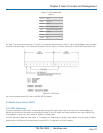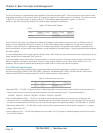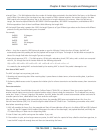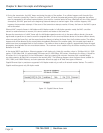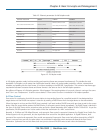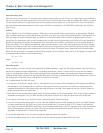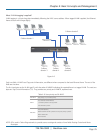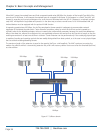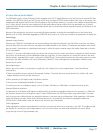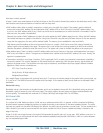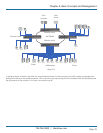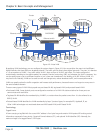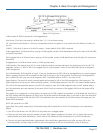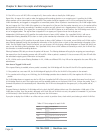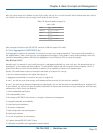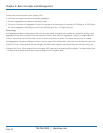
724-746-5500 | blackbox.com
Page 37
Chapter 4: Basic Concepts and Management
4.5 How Does a Switch Work?
The LGB2118A switch is a layer 2 Ethernet Switch equipped with (16) TP Gigabit Ethernet ports and (2) slots for optional SFP fiber
modules. The LGB2124A switch has (20) TP ports and (4) slots for optional TP/SFP combo modules. Each port on the switch is an
independent LAN segment and thus has 26 LAN segments and 26 collision domains, in contrast to the traditional shared Ethernet
hub, in which all ports share the same media and use the same collision domain and thus limit the bandwidth use. A switch’s
separated collision domain extends the LAN diameter farther than the shared hub does and greatly improves the efficiency of the
traffic transmission.
Because of the architecture, the switch can provide full-duplex operation to double the bandwidth per port and many other
features, such as VLAN, bandwidth aggregation (LGB2118A only), and so on, which are not able to be supported in a shared hub.
Terminology
Separate Access Domains:
Ethernet uses CSMA/CD to arbitrate who can transmit data to the station(s) attached in the LAN. When more than one station
transmits data within the same slot time, the signals will collide, referred to as a collision. The arbitrator will arbitrate who should
gain the media. The arbitrator is a distributed mechanism in which all stations contend to gain the media. Please refer to Section
4.1 for more details.
In Figure 4-7, running in half-duplex mode, you will see that some ports of the switch are linked to a shared hub, which connects
many hosts, and some ports just are individually linked to a single host. The hosts attached to a shared hub will be in the same
collision domain, separated by the switch, and use the CSMA/CD rule. The host directly attached to the switch, because no other
host(s) joins the traffic contention, will not be affected by CSMA/CD. These LAN segments are separated in different access
domains by the switch.
Micro-segmentation:
When a port of the switch is connected to a single host, this is referred to as micro-segmentation. It has the following
characteristics.
• There is no need for access contention (for example, Collision). They have their own access domain. But, collision still could
happen between the host and the switch port.
• When operating in full-duplex mode, the collision vanishes.
• The host owns a dedicated bandwidth of the port.
The switch port can run at different speeds, such as 10 Mbps, 100 Mbps, or 1000 Mbps. A shared hub cannot do this.
Extended Distance Limitations:
The diameter of a half-duplex LAN segment is determined by its maximum propagation delay time. For example, in a 10M LAN,
the maximum distance of a LAN segment using TP cable is 2500 meters and 185 meters when using coaxial cable. The switch
with its per port per collision domain can extend the distance in the same way as a bridge does. When operating in full-duplex
mode, the distance can reach farther than half-duplex because it is not limited by the maximum propagation delay time
(512 bits time). If fiber media is used, the distance can be up to tens of kilometers.
Traffic Aggregation:
Traffic aggregation combines the bandwidth of more than one port and treats it as a single port in the LAN. This single port has
the features of a normal port, plus loading balance. You can use this when you need more bandwidth but cannot afford
to pay the high cost of a high-bandwidth port.



